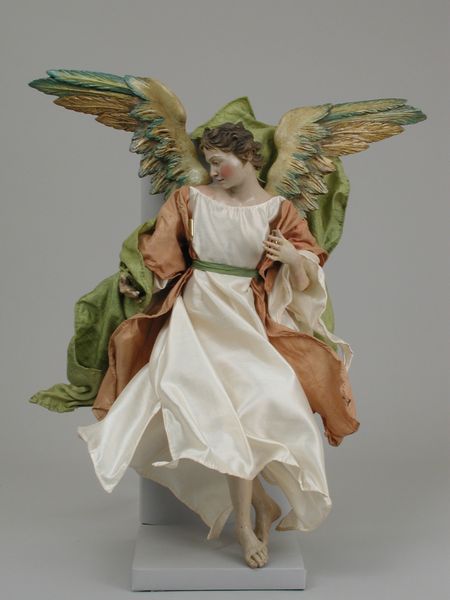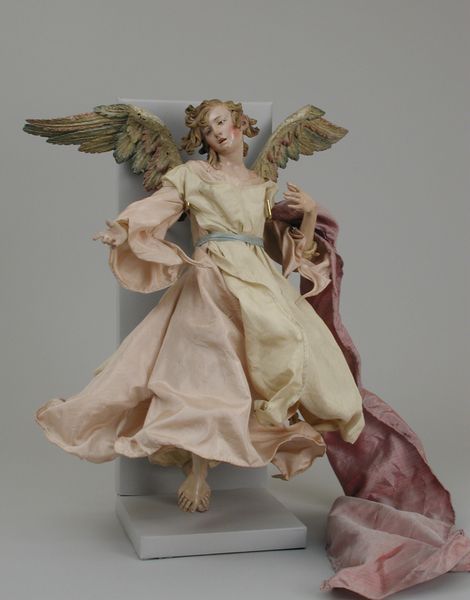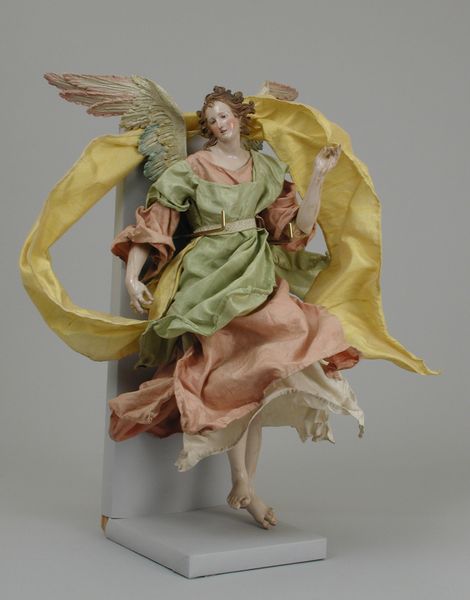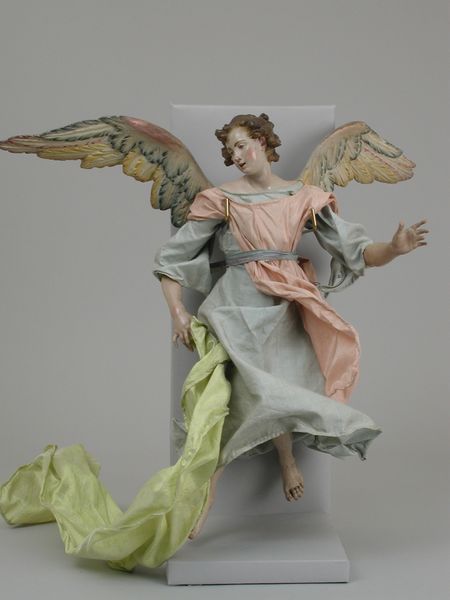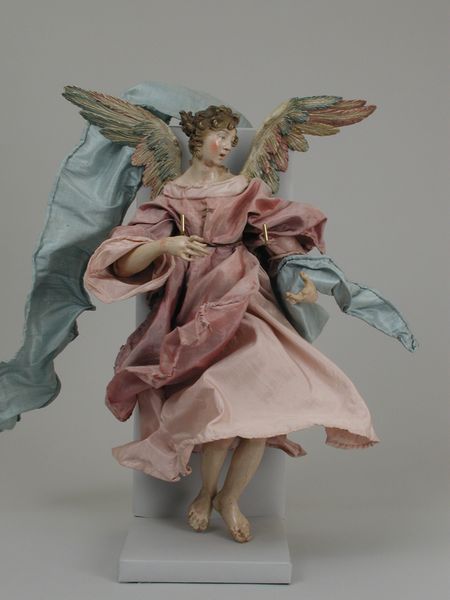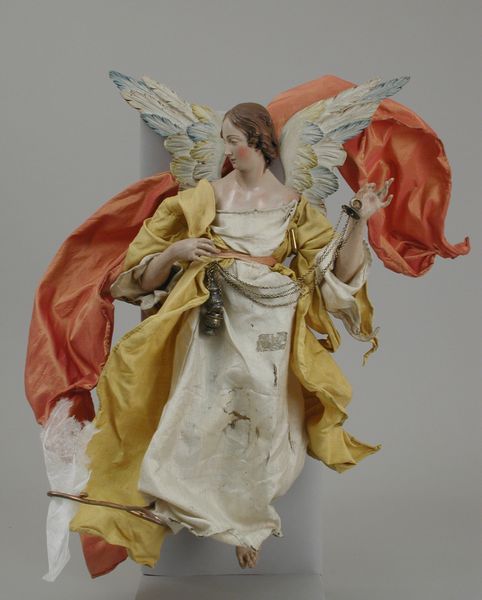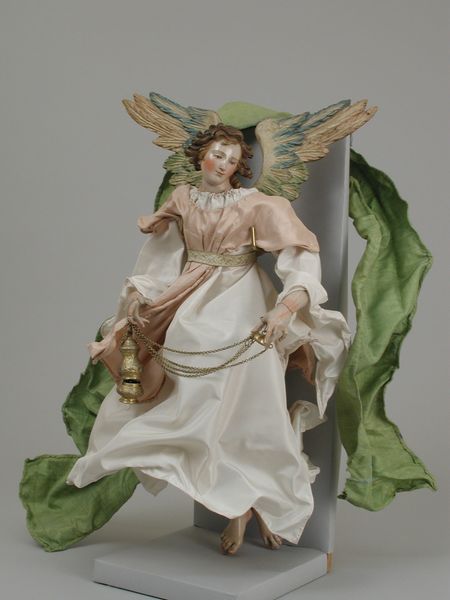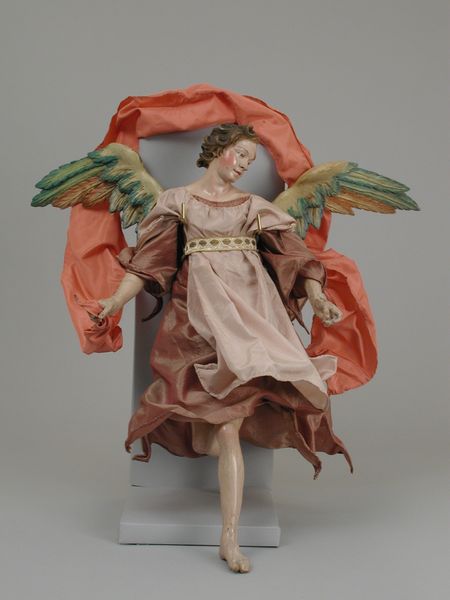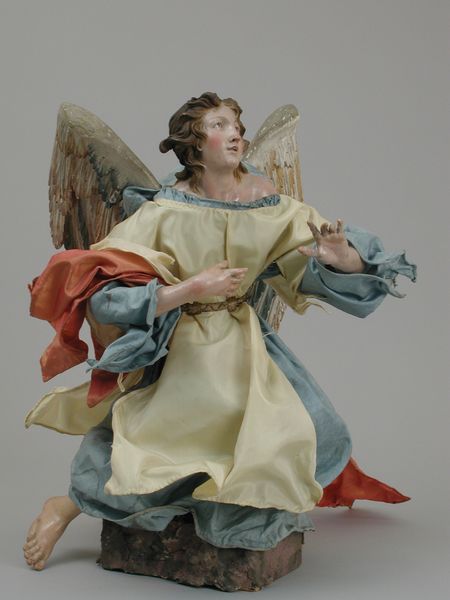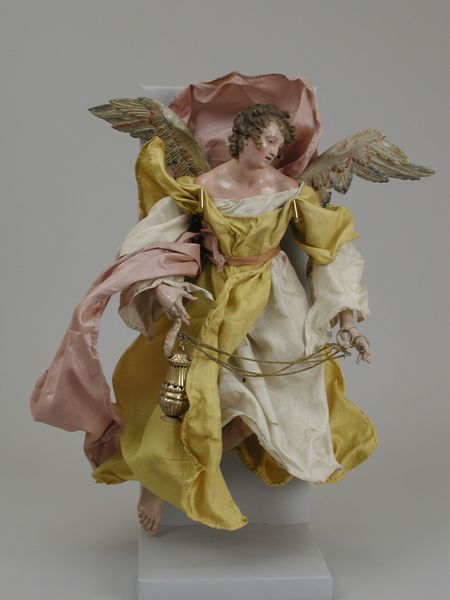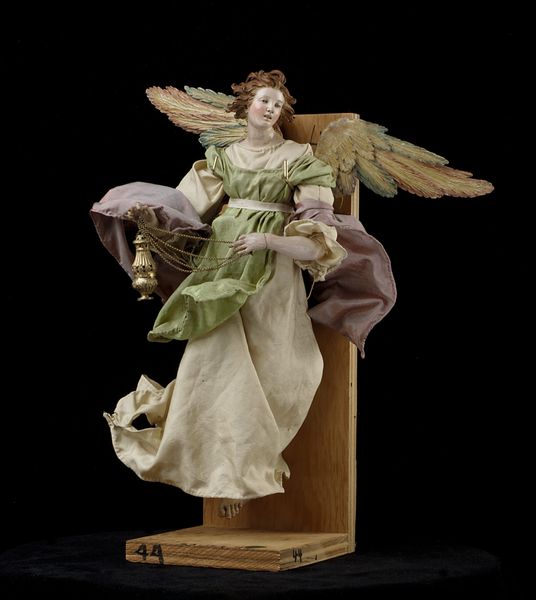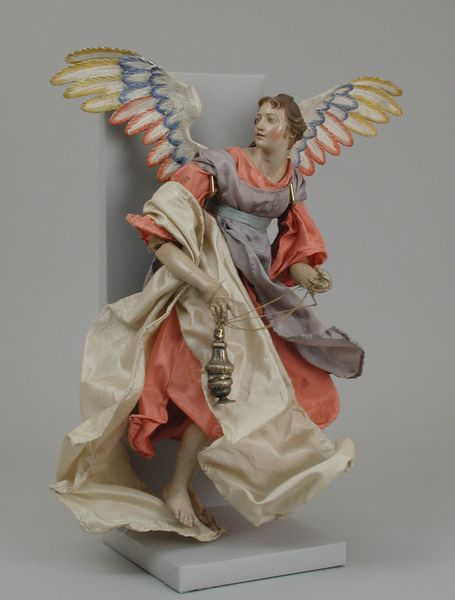
Dimensions: H. 16 3/4 in. (42.5 cm.)
Copyright: Public Domain
Editor: We're looking at "Angel," a sculpture likely from between 1750 and 1799. It’s currently housed at the Metropolitan Museum of Art. It’s quite ornate and, to be honest, a bit theatrical. What compositional elements stand out to you? Curator: Immediately, the dynamism achieved through the fabric’s billowing folds commands attention. Observe how the artist manipulates line and form to convey movement, even within a static medium. Note the implied lines directing our gaze: from the head, down the drape of fabric, to the object dangling from the gold rope in its hands. It is the manipulation of these shapes in tandem that imbues such an emotional expression. Editor: I see what you mean about the lines; they create this gentle, swooping path for your eye. What about the angel's slightly melancholic expression? Is there significance in its contrapposto pose, or would we not quite call it that given this is sculpture? Curator: While not adhering strictly to classical contrapposto, there's a definite shift in weight that informs the figure’s posture. Consider the texture; the wings are crafted of what seems to be shellacked paper or very stiff cloth, yet emulate feathered texture in their appearance. It adds to a rich sensory language that works because the artist carefully thought through the intrinsic features. Editor: The wings’ texture definitely contrasts with the smoothness of the face. So you see the angel’s meaning primarily within its material choices and arrangement of form? Curator: Precisely. We might also consider, more theoretically, how the artist engages the baroque visual idiom to signify divinity. Consider what feelings are communicated to viewers today versus then. However, the interplay between the statue’s components remains its primary site of significance. The angel's meaning is woven from these elements. Editor: So interesting! I was initially so focused on its potential religious connotations, and I now notice all these techniques working independently. Curator: Indeed, art's power often resides in that delicate balance between intrinsic qualities and external narratives. It gives one much to consider!
Comments
No comments
Be the first to comment and join the conversation on the ultimate creative platform.
